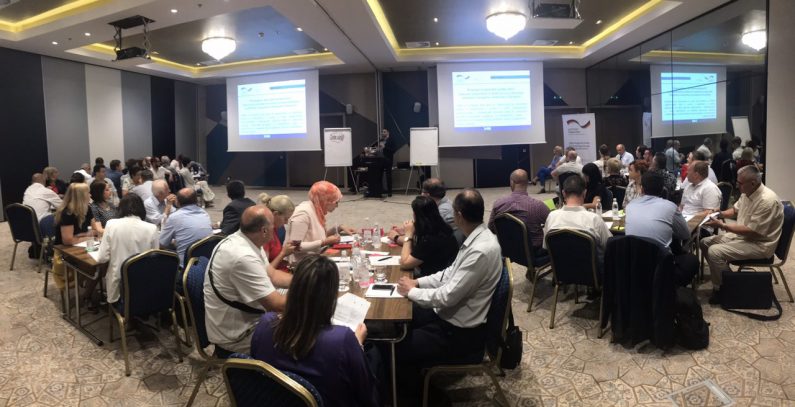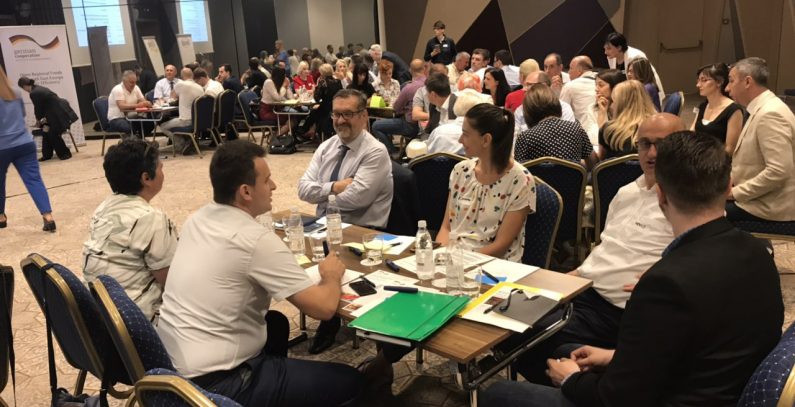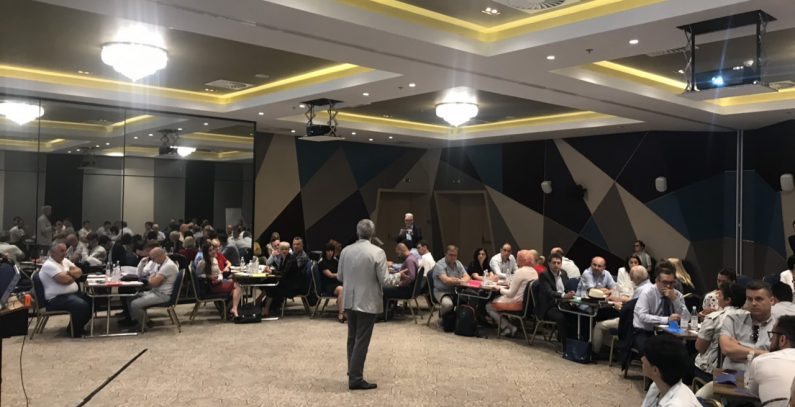
Photo: GIZ ORF-EE
Share
Share
On July 8, the Canton of Sarajevo invited over 40 stakeholders to a workshop to develop a common vision for Sarajevo’s first Sustainable Urban Mobility Plan (SUMP) and answer the question: What do we want our city to look like in 2030?
The City of Sarajevo and the Canton of Sarajevo are partners in the regional project “Sustainable Urban Mobility in SEE Countries II” (SUMSEEC II) under the Open Regional Fund for South East Europe – Energy Efficiency (ORF-EE). The project is funded by the German Ministry for Economic Cooperation and Development (BMZ) and is implemented by GIZ.
The vision developed by the stakeholders today lays the foundation for the SUMP – a strategic plan designed to satisfy the mobility needs of people and businesses in cities and their surroundings for a better quality of life.

Emir Hota, Economic Advisor at the Canton Sarajevo Ministry of Traffic, highlighted: “I hope that we will develop a plan of sustainable mobility – SUMP will provide a good basis for dealing with transport-related issues in urban areas. The aim of this plan is to ensure the accessibility of jobs and services to citizens, improve safety and protection, reduce pollution and energy consumption, increase efficiency and cost-effectiveness in transportation and ultimately increase the attractiveness and quality of urban life.”
Dubravka Bošnjak, Regional Project Manager with the GIZ, added: “With the implementation of SUMPS, the quality of life in other South East European capitals has greatly improved. Cities in the region are supported in engaging in strategic planning processes with primary focus on citizens’ needs, sustainable solutions, decrease of greenhouse gas emissions and improved quality of life.”

Anna Loffing, urban planner with SEE Change Net (expert of the German Center for International Migration and Development; CIM), said: “Citizen and stakeholder participation is at the heart of sustainable urban mobility planning. It is our role to listen to those who use the transportation system every day and make their voices count in the plan.”
Haris Ćatić, director of CEDES.ba, outlined: “Based on the vision developed with the stakeholders, a set of concrete goals and measures will be established. The measures will support more decisive strategic steps toward European standards and citizens’ expectations.”


















Be the first one to comment on this article.